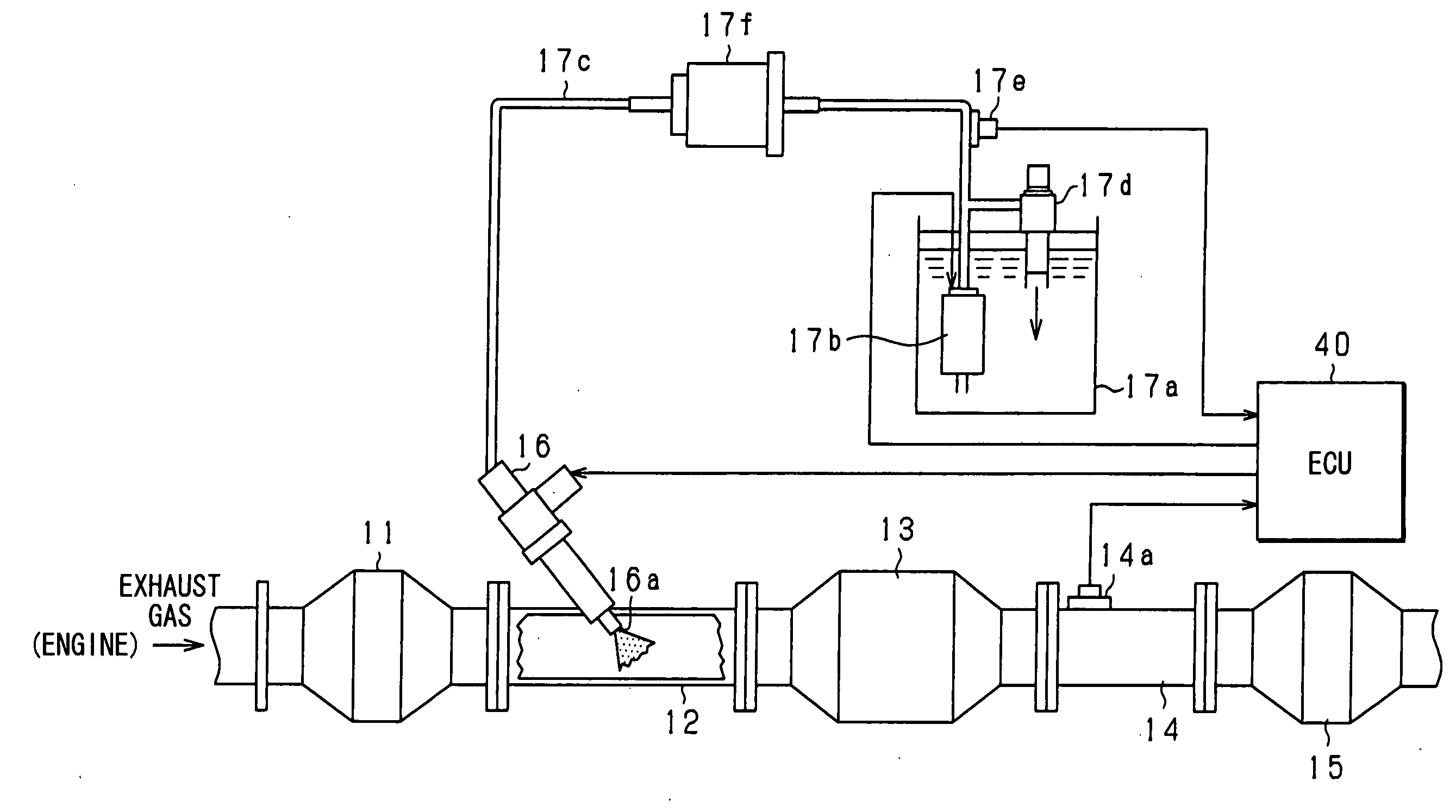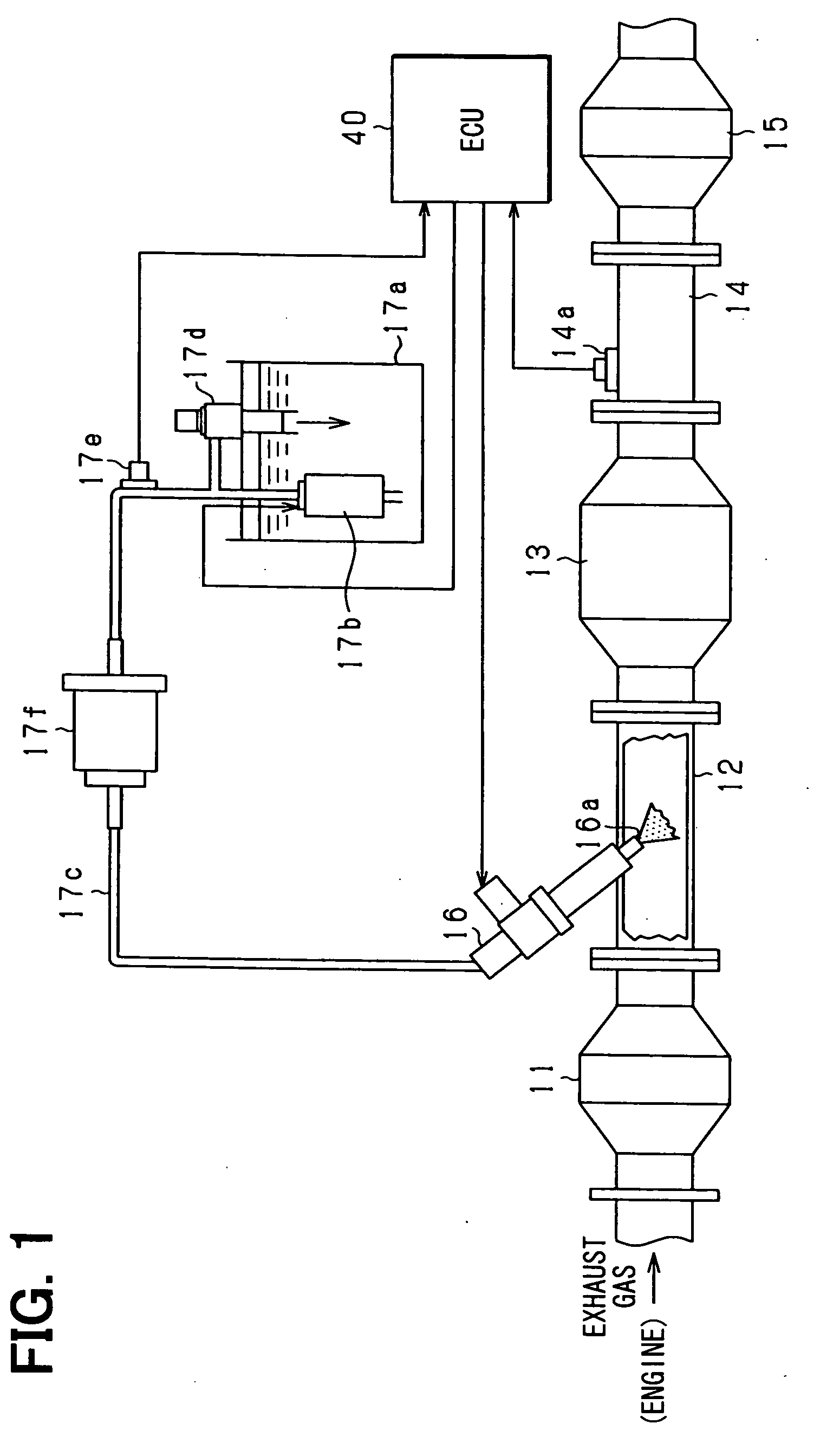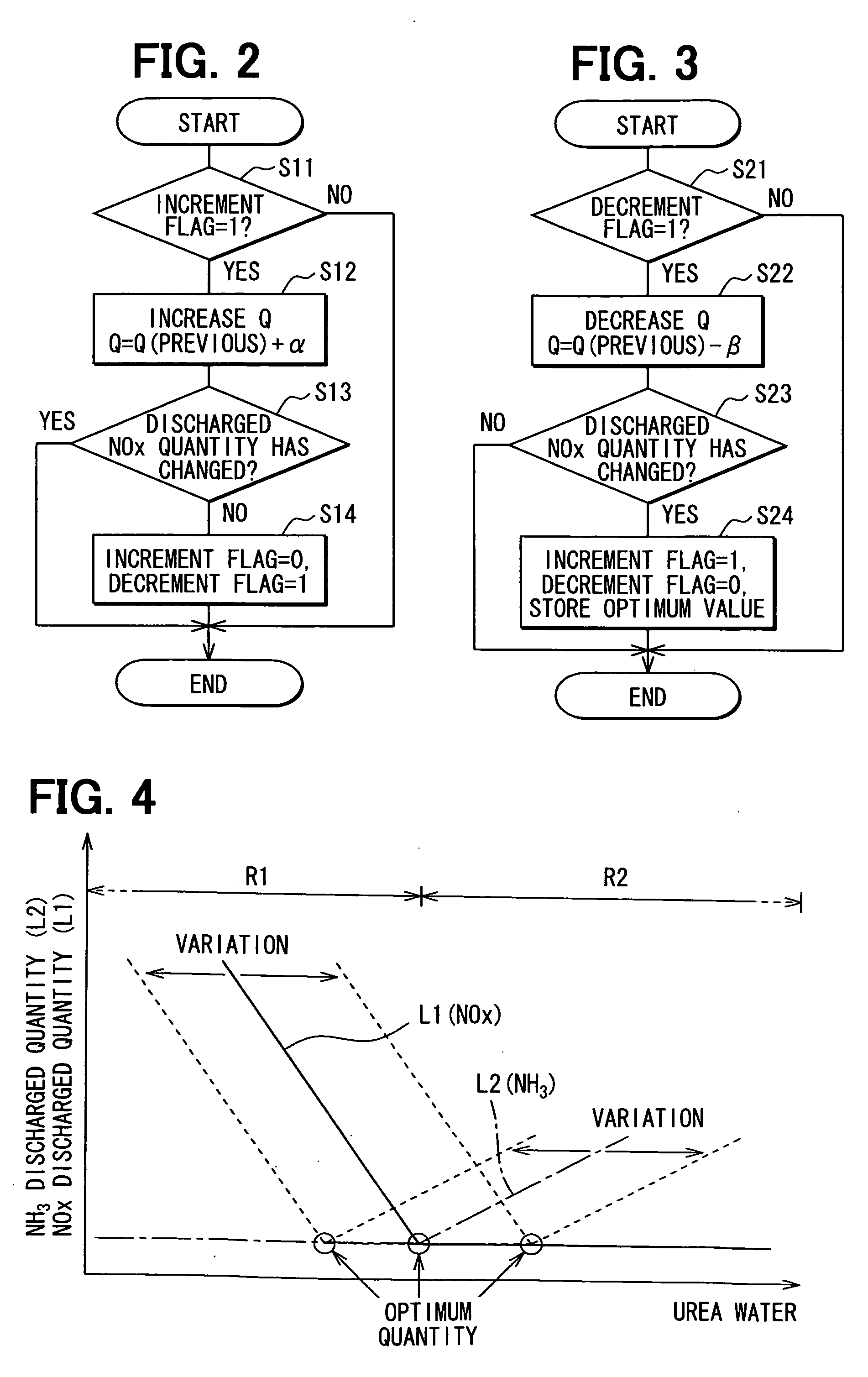Controller of exhaust gas purifying agent and exhaust gas purifying system
a technology of purifying agent and controller, which is applied in the direction of exhaust treatment electric control, machines/engines, instruments, etc., can solve the problems of difficult to obtain the optimum purifying agent quantity from those parameters, and achieve the effect of high purifying rate, high degree of accuracy and convenient handling
- Summary
- Abstract
- Description
- Claims
- Application Information
AI Technical Summary
Benefits of technology
Problems solved by technology
Method used
Image
Examples
Embodiment Construction
[0033]An embodiment of the present invention is hereunder explained in reference to drawings. The basic configuration of the exhaust gas purifying system in the embodiment conforms to that of an ordinary urea Selective Catalytic Reduction (SCR) system that has been stated earlier. A shown in FIG. 1, NOx in an exhaust gas is reduced (purified) by NH3 (ammonia) produced from a urea ((NH2)2CO) aqueous solution (hereunder referred to as urea water).
[0034]The configuration of the exhaust gas purifying system is described in detail in reference to FIG. 1.
[0035]FIG. 1 is a configuration diagram showing the outline of a urea SCR system (an exhaust gas purifying device) according to the present embodiment.
[0036]As shown in FIG. 1, such a system purifies an exhaust gas discharged from a reciprocal diesel engine (an exhaust gas source) mounted on a four-wheeled automobile (not shown in the figure) for example. The system includes various kinds of actuators to purify the exhaust gas, various ki...
PUM
 Login to View More
Login to View More Abstract
Description
Claims
Application Information
 Login to View More
Login to View More - R&D
- Intellectual Property
- Life Sciences
- Materials
- Tech Scout
- Unparalleled Data Quality
- Higher Quality Content
- 60% Fewer Hallucinations
Browse by: Latest US Patents, China's latest patents, Technical Efficacy Thesaurus, Application Domain, Technology Topic, Popular Technical Reports.
© 2025 PatSnap. All rights reserved.Legal|Privacy policy|Modern Slavery Act Transparency Statement|Sitemap|About US| Contact US: help@patsnap.com



